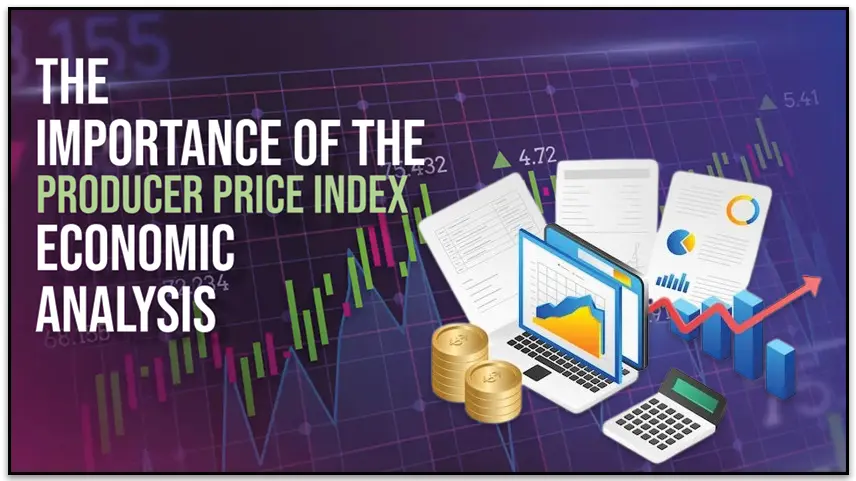The Importance of the Producer Price Index in Economic Analysis
The Producer Price Index (PPI) is a critical economic indicator that tracks the average change in prices received by producers for their goods and services. It is an essential tool for economic analysis, providing insight into inflation, market trends, and the economy's overall health. In this article, we'll explore the importance of PPI and how it is used in economic analysis.

What is Producer Price Index (PPI)?
The Producer Price Index (PPI) is an evaluate of the typical change in prices that producers receive over the course of time for their goods and services. It is calculated by taking a weighted average of prices for a basket of goods and services produced by a particular industry or sector. The PPI is often used as an early indicator of inflation, as changes in producer prices can be passed on to consumers in the form of higher prices for goods and services. The PPI is also used to track market trends and the economy's overall health, as changes in producer prices can reflect changes in demand, supply, and competition.
The PPI is calculated on a monthly basis by the Bureau of Labor Statistics (BLS) in the United States. In India, The producer price index is calculated by CICS Data. The index is based on surveys of prices paid by producers for raw materials, intermediate goods, and finished goods. The PPI is divided into three primary groups: completed goods, intermediate goods, and crude goods. Finished goods are those that are ready for sale to consumers, while intermediate goods are those that are used in the production of finished goods. Crude goods are those that are extracted from the earth or sea, such as oil, coal, and natural gas. By tracking changes in prices for these different categories of goods, the PPI provides a comprehensive picture of inflationary pressures in the economy.
How is the PPI used in economic analysis?
The PPI is used in economic analysis to track changes in the prices of goods and services produced by different industries and sectors. This information is used to identify trends in the market and to predict future changes in the economy. For example, if the PPI for a particular industry is increasing, it may indicate that the cost of producing goods and services in that industry is rising, which could lead to higher prices for consumers. The PPI is also used to calculate other important economic indicators, such as the Consumer Price Index (CPI), which measures changes in the prices of goods and services purchased by consumers. Overall, the PPI is a crucial tool for economists and policymakers to monitor and understand the health of the economy.
Limitation of Producer Price Index (PPI)
While the Produce price index (PPI) is a valuable economic indicator, it does have some limitations. One limitation is that it only measures changes in prices at the producer level, not at the consumer level. This means that it may not accurately reflect the price changes that consumers pay for goods and services. Additionally, the PPI only covers goods and services produced domestically, so it may not capture changes in prices for imported goods. Finally, the PPI may not be as useful for analyzing certain industries, such as the service sector, where prices may be more difficult to measure. Despite these limitations, the PPI remains an important tool for economic analysis.
Advantages of The Producer Price Index(PPI)
The advantages of producer price index (PPI) are mentioned below:
Measures inflation: PPI provides an important measure of inflation by tracking changes in prices at the wholesale level before they reach consumers. This can help predict future changes in consumer prices.
Reflects market conditions: PPI is based on actual transactions between producers and buyers, so it reflects current market conditions and provides a timely indicator of economic trends.
Provides industry-specific data: PPI provides data on price changes in specific industries, allowing policymakers to analyze trends in different sectors of the economy.
Used for contract adjustments: PPI is used as a benchmark for adjusting contract prices in various industries, such as construction and manufacturing.
Aids in policy decisions: PPI data is used by policymakers and economists to make informed decisions about monetary policy, including interest rate adjustments and other measures to control inflation.
Offers international comparisons: PPI is compiled by many countries around the world, making it possible to compare inflation and economic trends across borders.
Measures changes in production costs: PPI tracks changes in the prices of inputs used by producers, such as raw materials, labor, and energy. This can help businesses identify cost pressures and adjust their production strategies accordingly.
Conclusion
In conclusion, the Producer Price Index is a crucial economic indicator that provides valuable insights into the state of the economy. While it has some limitations, it remains an important tool for analyzing trends in producer prices and understanding the broader economic landscape. By keeping an eye on the PPI, economists and policymakers can make informed decisions that help to promote economic growth and stability.

0 comments